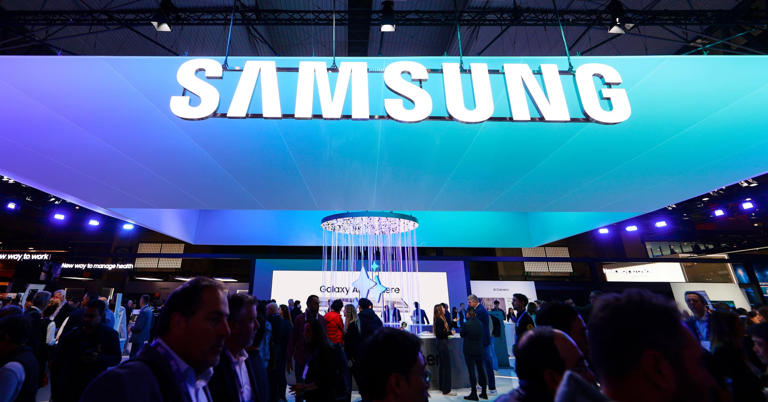Samsung Electronics delivered an impressive performance in its second-quarter financial results, surpassing analysts’ expectations and demonstrating strong growth driven by the burgeoning demand for AI technologies. For the quarter ending June, Samsung reported a revenue of 74.07 trillion Korean won (approximately $53.45 billion), reflecting a substantial 23.42% increase year-over-year. The company’s operating profit experienced a staggering rise of 1,458.2% compared to the previous year, underscoring the significant impact of its advanced memory chip sales on its financial performance.
Key Factors Behind Strong Performance
The substantial revenue and profit growth can be attributed to Samsung’s strategic focus on high-bandwidth memory (HBM) and other advanced memory products, which are crucial for the development and deployment of artificial intelligence (AI) technologies. The demand for these components, particularly in server AI applications, has surged as companies and data centers seek to enhance their AI capabilities. Samsung’s ability to effectively meet this demand has been a critical driver of its financial success.
Specifically, Samsung has capitalized on the growing need for HBM and solid-state drives (SSDs), essential for AI infrastructure. The company’s commitment to expanding its production capacity for HBM3E, the latest iteration of its AI memory product, and increasing the output of SSDs aligns with the sustained demand in the market. This strategic expansion is expected to bolster Samsung’s position in the AI memory segment and further drive its revenue growth in the latter half of the year.
Financial Impact and Market Reaction
Samsung’s strong performance in the second quarter was met with a positive market reaction, with the company’s shares rising by as much as 1.35% in early trading following the announcement. In line with its dividend policy, Samsung declared a dividend of 361 won per common and preferred share for the second quarter. The total dividend payout will amount to approximately 2.45 trillion won and is scheduled to be distributed near the end of August, reflecting the company’s commitment to returning value to its shareholders.
Memory Market Dynamics
The robust performance of Samsung’s memory segment is part of a broader industry trend driven by the resurgence in memory chip prices and the increased demand for AI technologies. The company’s success in this area follows a challenging period for the memory industry, which experienced a significant downturn after the COVID-19 pandemic. However, with the AI boom fueling renewed interest and investment in high-performance memory components, companies like Samsung are well-positioned to benefit from this uptrend.
The positive outlook for memory prices is supported by expectations of continued growth in the AI sector. According to CLSA, memory chip prices are projected to rise further, contributing to ongoing profit growth for Samsung through at least 2025. The recovery in memory prices, combined with the strong demand for HBM and high-density enterprise SSDs, has been a key factor in Samsung’s improved financial performance.
Strategic Moves and Future Prospects
Samsung is not resting on its laurels; the company has outlined plans to address the sustained demand for AI memory products by expanding its sales of HBM3E chips and SSDs. This expansion is expected to help Samsung meet the growing needs of AI servers and other high-performance computing applications. The firm’s ability to adapt and scale its production capacity will be crucial in maintaining its competitive edge in the memory market.
In addition to its success in the memory sector, Samsung continues to focus on its premium Galaxy AI products, including the latest Galaxy Z Fold6, Z Flip6, Watch Ultra, and Ring. Despite a decline in overall smartphone sales in the second quarter, primarily due to the impact of previous new model launches, the Galaxy S24 series has demonstrated strong demand. Samsung’s strategy to invest in enhancing AI functionalities in its devices aims to drive future growth and maintain its position in the competitive smartphone market.
Challenges and Competitive Landscape
While Samsung’s memory business has seen a significant rebound, the company faces challenges in other areas, such as smartphone profitability. Rising component costs have impacted profit margins in the smartphone segment, and the company expects continued pressure in the mass segment of the market. However, Samsung’s focus on premium devices and AI integration positions it well to navigate these challenges and capitalize on emerging opportunities.
Samsung also faces stiff competition from other major players in the memory market, such as SK Hynix and Micron. SK Hynix, in particular, has reported its highest quarterly profit since 2018, signaling a strong recovery from previous losses. As these competitors advance in the AI and memory chip markets, Samsung will need to continue innovating and expanding its capabilities to maintain its leadership position.
Overall, Samsung Electronics’ strong second-quarter performance highlights the company’s strategic focus on AI-driven memory solutions and its ongoing efforts to adapt and thrive in a rapidly evolving market. The company’s ability to leverage the growing demand for high-performance memory components and its commitment to innovation will be key factors in sustaining its growth and competitive advantage in the future.
